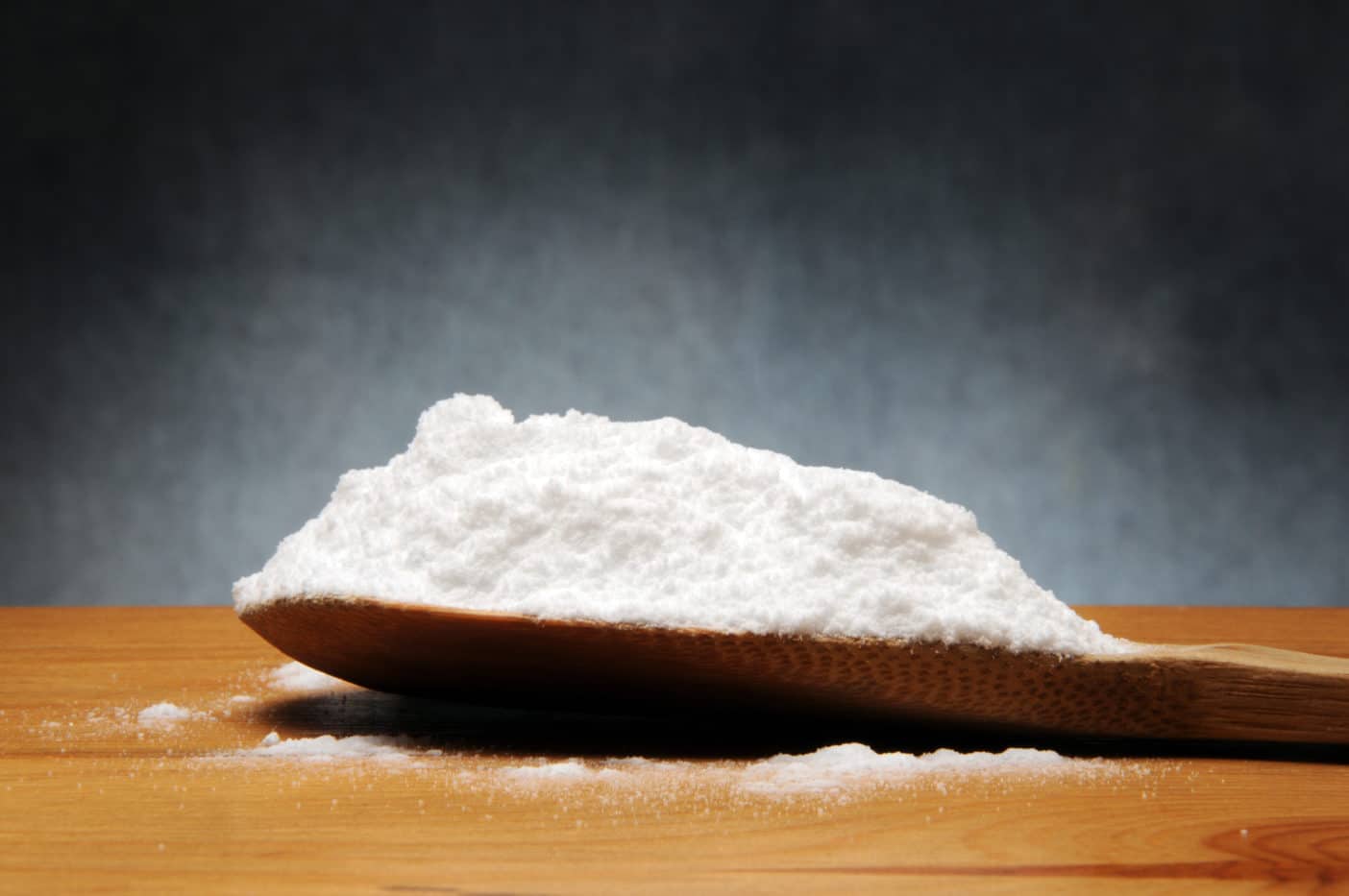Sodium hydrogen carbonate

Our grandmother’s kitchen and bathroom would have been unimaginable without sodium hydrogen carbonate (sodium bicarbonate for short). It was used to clean the oven as well as to brush or whiten teeth and served as a secret weapon against heartburn. Unfortunately, the miraculous powers of the substance have now been somewhat forgotten. Today, sodium bicarbonate is primarily used to make sherbet and baking powder. But there is one positive piece of news: In cosmetics, sodium bicarbonate is clearly on the rise. The following article explains why this is so and what sodium hydrogen carbonate does.
What is sodium hydrogen carbonate?
The substance colloquially known as sodium bicarbonate is the sodium salt of carbonic acid. In the trade, we encounter it under the terms food soda or baking soda. It is also used in many other areas. In aquaristics and for the care of pool water, for example, in agriculture as a cheese ripening agent and as a remedy against fungal diseases, in aeronautical engineering for heat absorption and in industry as a component of fire extinguishing powders. In medicine, sodium bicarbonate is used as an additive in dialysis, and it is also used to treat poisoning by salicylates and barbiturates and to treat metabolic acidosis in infusions. Every year, about 100,000 tonnes of the compound are produced worldwide. Important: Sodium bicarbonate must not be confused with sodium carbonate, which is known as washing soda! Especially in the USA, sodium hydrogen carbonate occurs in shale oil as the natural mineral nahcolite.
Sodium hydrogen carbonate in cosmetics
Sodium hydrogen carbonate is not only extremely versatile, but also completely harmless. In the CLP regulation (abbreviation for “Regulation on Classification, Labelling and Packaging of Substances and Mixtures”), the substance has been classified as non-hazardous. It is free of allergens and, according to the Cosmetics Regulation, NOT a restricted use ingredient. Sodium hydrogen carbonate may even be officially used in natural formulations because it has a natural origin with index 1 (according to standard NF ISO 16128).
But why is the compound also so interesting cosmetically? This is mainly due to the fact that sodium hydrogen carbonate rebalances our acid-base balance. This is not only important for our health in general, but also for our skin in particular. When sodium bicarbonate is used in a deodorant, for example, it regulates the pH value and neutralises odours. Sweating, which is actually very important for our body, is not hindered by this. Thanks to its excellent tolerance, sodium bicarbonate is a very effective and, above all, gentle alternative to products with aluminium salts. Extensive studies have already proven the excellent odour-inhibiting effect of sodium hydrogen carbonate.
With 20% sodium hydrogen carbonate, a good deodorising effect could be confirmed after 8 or 12 hours. Ideally, we use the products from Sequens (https://www.seqens.com/en/products/sodium-bicarbonate/).
It is especially suitable for roll-on deodorants, but also for deodorant creams. Thanks to its special composition, the substance can even help against sweaty feet, because it reduces the development of odour-forming bacteria here, too. In this context, either foot baths with sodium hydrogen carbonate or powder with sodium bicarbonate to sprinkle into the shoes are suitable.
However, there are many other possible uses. Among other things, sodium bicarbonate can be integrated very well into peelings and nourishing face masks. This is especially useful for people who have a pH imbalance that leads to blackheads and pimples. Sodium hydrogen carbonate neutralises the excess acids on the skin so that the complexion becomes clearer and purer again. However, pure sodium bicarbonate should not be used daily on very sensitive skin. If, on the other hand, it is integrated into high-quality formulations, no significant side effects are to be expected even with daily use and on sensitive skin.
Conventional facial cleansing products sometimes interfere with the skin’s self-regulating processes and remove the skin’s natural protective layer. Products containing natron, on the other hand, cleanse the face gently and thoroughly without attacking the skin’s protective barrier.
If you want to purify and deacidify your body, treat yourself to a bath with a product containing sodium bicarbonate every now and then. Positive side effect: it has a soothing effect and makes the skin soft to the touch. For an optimal deacidification effect, however, the bath time should be about three quarters of an hour. Finally, sodium hydrogen carbonate is also an excellent choice for hair care. It removes chemicals such as silicones from the hair and brings the scalp into optimal balance.
However, the following applies to all applications: The sodium hydrogen carbonate contained should be as pure as possible. Classic products from the supermarket – for example baking powder – sometimes contain phosphates or citric acid, substances that do not belong on our skin. That is why sodium bicarbonate for cosmetic formulations should always be of pharmaceutical quality.
Factsheet Sodium hydrogen carbonate
INCI: Sodium bicarbonate
CAS number: 144-55-8
Molecular formula: NaHCO3
Description: a fine white powder, colourless and odourless
Melting point: decomposes at over 270 degrees Celsius
Solubility: moderate in water
Sodium hydrogen carbonate in sophisticated cosmetic products from Cosmacon
Usually referred to simply as sodium bicarbonate, this compound is a natural, gentle, and very effective deodorising agent with excellent compatibility. It is an optimal alternative to the critical aluminium salts and is also suitable for natural cosmetics. Sodium hydrogen carbonate is also a very good choice for many other areas of application. Cosmacon is happy to assist you in the development of high-quality products.
Literature:
Welzel, J. (2020). Grüdl, S., Banowski, B., Sättler, A., Förster, T. and Welss, T. New Technologies for Specific Antiperspirant Ac- tions. SOFW, 146 (03/20), pp. 46-51.
Standard guide for sensory evaluation of axillary deodorancy – E1207-09. ASTM International – 2012
Assessment of the odour-inhibiting properties of sodium bicarbonate by sensory evaluation; S. Mouzon, J. Perez; Sofw Journal, 146, 10/20 pp. 46-50.
Physiological mechanisms determining eccrine sweat composition. Baker LB, Wolfe AS.Eur J Appl Physiol. 2020 Apr;120(4):719-752
